Editorials that illustrate the importance and
profound benefits of healthy habits
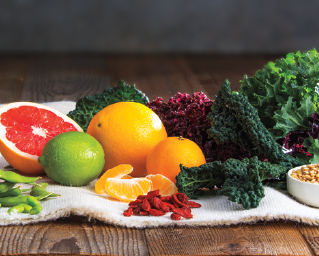
A Journey Through 5 Nutrient - Dense Foods

Easing Back Into Outdoor Exercises
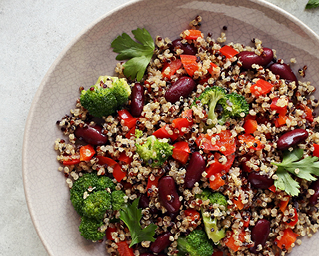
The Power of Plant Based Protein
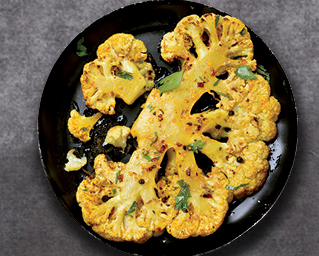
What Can’t Cauliflower Do?
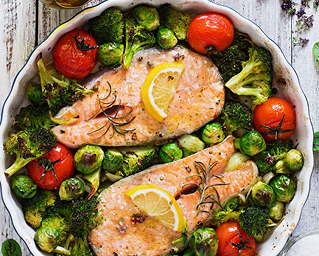
Clean Eating

Diabetes 101: Proper Diet & Exercise Can Help!
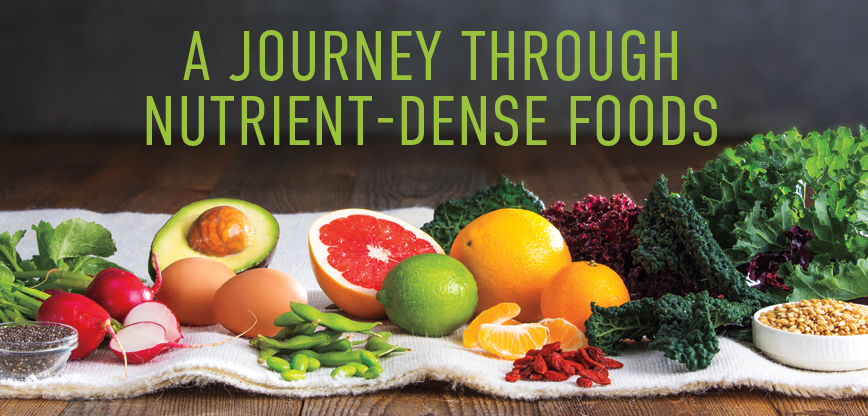

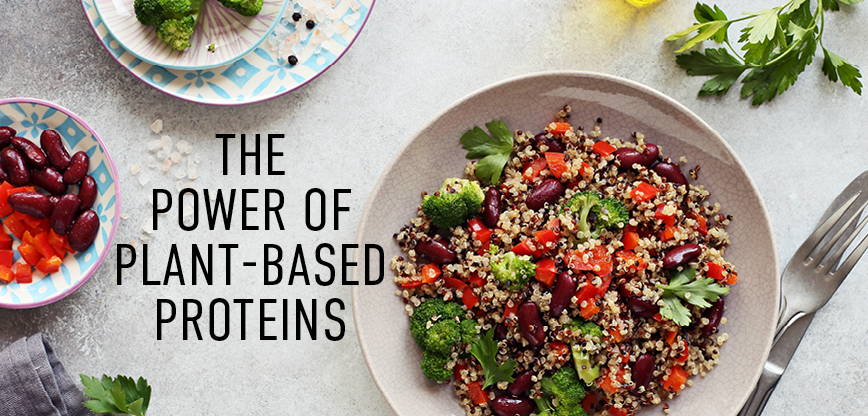
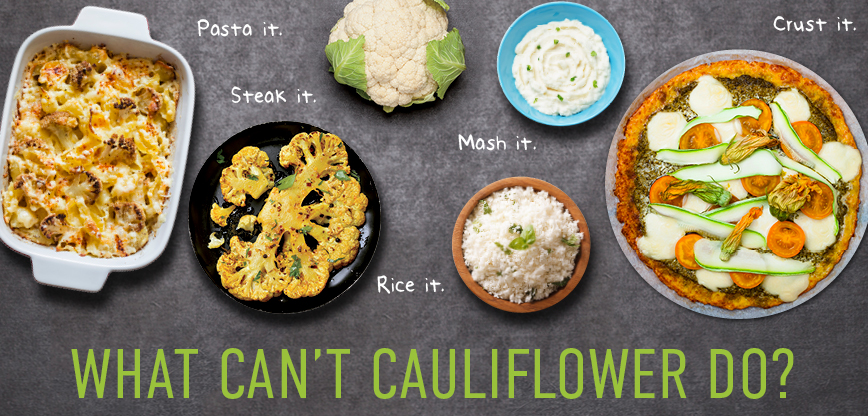


Getting the most health bang for your buck from the foods you eat starts with selecting nutrient-dense foods — those low in calories yet high in disease-fighting micronutrients like vitamins, minerals, and antioxidants. Here are some of our favorite powerhouse foods to incorporate into your diet and your shopping cart as you make your way through your local grocery store aisles.
Chia Seeds
Health Benefits: these tiny seeds pack a nutritional punch — they’re high in fiber which naturally helps keep you full and can help regulate blood sugar levels; they’re also a plant source for omega-3 fatty acids which are good for heart and artery health. Use It: make a breakfast pudding; add to homemade granola; sprinkle on salads; mix with your favorite seasonings for a crunchy coating for chicken or fish.
Radishes
Health Benefits: full of flavor and crunch, this low-calorie veggie is loaded with vitamin C which helps support a healthy immune system. They also contain significant amounts of glucosinolates, which support the body’s own natural detoxification system. Use It: slice into salads; pickle them; slice and sauté, then sprinkle with blue cheese and chives.
Avocados
Health Benefits: the smooth, creamy texture is attributed to their fat content, which is mainly heart-healthy monounsaturated fats; they’re also rich in plant sterols, a plant compound that has cholesterol-lowering properties. Use It: slice on top of an omelet or whole grain toast; mash for guacamole; add to smoothies and popsicles.
Edamame
Health Benefits: full of protein and fiber this “super bean” is a healthful substitute for high-fat protein sources; it’s also rich in folate, which is an important vitamin for a healthy pregnancy. Use It: add shelled edamame to salads or a veggie-packed grain bowl; purée with sesame oil, garlic, ginger and lemon juice for an Asian-inspired hummus.
Dried Goji Berries
Health Benefits: despite their small size, goji berries are high in antioxidants and Vitamin A which is needed for good eyesight; most commonly found dried, you can also find goji berries used in energy bars, granola, tea and snack foods. Use It: add dried berries to cereal and trail mixes; soak dried berries and add to smoothies or baked goods.
There are benefits of exercising outside that can’t be replicated at a gym or indoors on a track, recumbent bicycle, or treadmill. A study performed by the Peninsula College of Medicine and Dentistry in 2011 found that compared to indoor activity, outdoor exercise was associated with greater decreases in tension, confusion, anger, and depression. Participating in physical activity outdoors also introduces a change in scenery, allowing time to pass quickly.
Take a Walk
The first step to engaging in more exercise can be as simple as going for a walk. Brisk walks can provide a range of health benefits such as maintaining weight and preventing conditions such as heart disease and diabetes. Whether it’s through your neighborhood, at the park, or on a nature trail, a 30-minute or longer walk will boost your mood, increase your physical activity, and provide a healthy dose of vitamin D.
Workout in the Park
You can perform a myriad of workouts in your local park such as yoga, simple cardio exercises, or a long stroll. You can also use the park equipment to complete different physical activities. For example, perform squats on the park bench by placing your hands beside you and sliding forward off the bench so you’re supporting yourself with your hands. Bend your elbows as you lower yourself, almost touch your bottom to the ground, and lift up again. Perform as many reps of these simple, innovative exercises that feel comfortable to you.
Find a Workout Partner
It can be tough to commit and follow through with workouts. Having someone to work out with increases your motivation and makes it easier to hold yourself accountable to your goals. Heighten the fun by performing partner stretches or workouts in the park, or encourage one another by discussing your fitness goals during a walk, jog, or bike ride.
Make a Schedule
Another tool for motivation to get outside is to create a workout schedule. Make time for outdoor activity and write it on your calendar, in your planner, or anywhere you won’t forget! Setting aside specific times for exercise and writing down your plan of action helps eliminate the possibility of distractions that may keep you indoors. Scheduling time for workouts also increases the likelihood that your goals to exercise outside will become a habit; you will see results quicker if you stay consistent.
There are various reasons why consumers are opting for plant-based foods ranging from the environmental and ethical implications of eating meat to the personal health concerns and the recognized health benefits of plant foods. Studies indicate that it costs more to produce meat and dairy than it does to grow vegetables and grains, and meat production depletes environmental resources at a greater rate. Diet trends have greatly supported the inclusion of “clean” foods that are unprocessed and free from the hormones and antibiotics found in meat and dairy products. Individuals with dairy allergies or lactose intolerance also seek plant-based alternatives. Finally, the lower cost and simplicity of preparing plant foods adds to their popularity.
Research consistently shows that plant foods have a host of health benefits. Protein in general is an excellent nutrient for maintaining muscle and keeping appetite in check. When protein comes from plant foods, it instills greater benefits including better cardiovascular health through improved cholesterol levels and lower blood pressure, decreased cancer risks, and promotion of a healthy weight through accompanying fiber and fewer calories per serving.
Most plant foods are ready to eat and require little-to-no preparation including seeds, nuts, and canned beans. All of these foods can be added to soups, stir-fries, or salads to increase the nutrient content while making them more filling. The following easy recipes and tips will help you incorporate a variety of plant-based proteins into your diet.
- Beans – Rinse canned beans and combine with cooked brown rice, corn, green onions, and salsa. Beans are inexpensive and a great source of iron, making them an ideal replacement for meat.
- Soy Foods – Marinate tofu in soy sauce and garlic and then stir-fry with vegetables and rice, or simply boil edamame for an easy snack.
- Legumes – A classic peanut butter and banana sandwich on whole grain bread is an easy, protein-rich meal.
- Nuts – Nuts such as almonds, walnuts, hazelnuts, or pistachios are delicious on their own, or when combined with dried fruit as a trail mix.
- Seeds – Pumpkin and sunflower seeds are perfect for snacking or as a topping for cereal. Quinoa is a protein-rich alternative to rice or pasta. Hemp and chia seeds boost the nutrition of a smoothie.
- Protein Powder – Plant-based protein powders make an excellent base for a fruit smoothie.
Nutrition Perks & Selection Tips
Cauliflower supplies the body with an impressive amount of vitamins and minerals like B6, C, K, folate and potassium, as well as fiber and powerful antioxidants. Its benefits include improving heart, bone and brain health, and maintaining a healthy digestive tract.
Cauliflower sports a variety of hues including white, green, purple, and orange. Select cauliflower with a clean surface, vibrant leaves, and densely packed, blemish-free florets. Choose a head of cauliflower that feels heavy when you hold it, and store for up to one week tightly wrapped in the refrigerator.
Eminently versatile, cauliflower is a superfood that can be utilized like a blank canvas and added to almost any dish. Try one of its many tasty guises using one of our healthy and delicious preparations!
Rice it.
Riced cauliflower is a versatile form that can stand in as the base for crusts, veggie burgers, risottos and more. Use a box grater or food processor to cut the cauliflower into rice-size pieces and enjoy it raw, cooked with garlic, herbs and lemon juice or paired with chicken, sautéed onions, scallions, peas and carrots for cauliflower fried rice.
Pasta it.
Boost veggie intake for you and the kids by using cauliflower as the vessel for “mac” made with cauliflower, cream, your choice of cheese and seasonings. If you’re not ready to let go of the classic mac, use whole-grain pasta, substituting half the amount with cauliflower.
Crust it.
Enjoy a gluten-free, grain-free pizza crust by combining riced cauliflower, eggs, and seasonings, then form it into a crust shape. Top the cauliflower crust with garlic, olive oil, part-skim mozzarella, spinach and sun-dried tomatoes, and bake until golden brown.
Mash it.
Use cauliflower as a stand-in for mashed potatoes. Blend one head of steamed cauliflower, garlic, chicken broth, salt and pepper in a blender to create an irresistible side dish. Stir in prepared pesto, chopped fresh dill and lemon zest, or Greek yogurt, smoked paprika and sliced green onion.
Steak it.
Slice one head of cauliflower into 3/4-inch-thick pieces, creating several large “steaks.” Brush them with oil and sprinkle with your favorite steak seasonings. Grill for 8 minutes or until charred, turning once, and top the steaks with lemon-caper sauce (fresh lemon juice, olive oil, fresh chopped parsley, drained and rinsed capers, lemon zest, salt and pepper) and a poached egg for protein.
Chances are, you have heard the phrase “clean eating.” It’s based on eating whole foods or foods that are minimally processed, free of artificial ingredients, and as close to their natural state as possible.
Clean eating can be beneficial to health in a variety of ways. Our bodies have a built-in detoxification system. For this system to work efficiently, we must support it through good nutrition. Clean eating via the consumption of whole foods helps rid the body of toxins and can contribute to improving overall health.
Getting Started
Adjusting to a diet free of processed foods can be difficult and take time, so start with small steps. Read food labels while grocery shopping to ensure the foods you’re purchasing are as close to natural as possible. A good rule of thumb is if there’s a food that contains an ingredient you can’t pronounce, the product is likely man-made and not considered a whole food.
Another way to make the transition easier is to meal prep. At the beginning of the week, cook meals in batches. For example, bake a large batch of chicken and vegetables, and have other healthy snacks like fruit, yogurt, and oats on-hand to ensure there are nutritious meals and snacks ready to grab throughout the week. Measuring out meals into smaller portions is another important factor that contributes to better health. Eating five to six smaller meals per day with healthy ingredients increases metabolism and helps maintain portion control.
Supermarket Shopping Tips
It’s much easier to eat clean when you fill your fridge with natural and fresh whole foods. As you shop, keep in mind that the perimeter of the store is where you will find the majority of natural foods. If you are shopping for center aisle items, be sure to read labels. The key is to choose fresh or packaged foods with simple ingredients. Shop for high fiber foods since both insoluble and soluble fiber aid in the elimination of toxins from the body. Fiber is found in plant foods, so if you consume plenty of fruits and veggies and shop for high fiber breads and cereals that offer at least three grams of fiber per serving, you will easily meet your fiber goal of 25 grams per day.
Our body requires many different nutrients for everyday living. Carbohydrates, for example, are nutrients that provide glucose for energy. But before glucose can be used, insulin must transport it into cells. Lack of insulin or inability to use the insulin made by the body causes high glucose levels in the blood; this metabolic disorder is known as diabetes.
Diabetes is a chronic disease affecting millions of adults and children in the United States, with a large proportion taking medications such as insulin. Diet management is an essential component in a diabetes care plan. Following a healthy and balanced diet can improve and further prevent health complications associated with diabetes. Below are a few recommendations by the American Diabetes Association for improving the diabetic diet:
- Adopting a Mediterranean-style diet can help with glycemic control because many of the foods are high in monounsaturated fatty acids. Some foods to consider are almonds, avocados and olive oil.
- Eat fish with high amounts of omega-3 fatty acids, such as salmon or tuna, at least two times per week to reduce cardiovascular disease risk and help with glycemic and blood pressure control.
- For reduction and better management of blood pressure, try to limit sodium intake to less than 2,300 mg/day.
Aside from healthy delicious foods, an active lifestyle also contributes to improving the health of individuals with diabetes. A great place to start is the activities you already enjoy. Walking, bicycling, dancing, and even moderate-to-heavy gardening are some enjoyable forms of physical activity.
According to the U.S. Department of Health and Human Services, the amount of physical activity depends on the type of exercise. Below are the recommended exercise regimens for adults over 18 years old:
- Moderate intensity: 150 min/week or
- Vigorous intensity aerobic: 75 min/week or
- An equivalent mix of both moderate and vigorous intensity
The elderly and those with disabilities should follow the guidelines above if possible. Otherwise, it is recommended to exercise as much as they are able.
Creating a diabetes care plan that fits your lifestyle will help to keep you on a healthy track. Discuss your goals and the changes you want to make with your physician or dietitian to get started.
